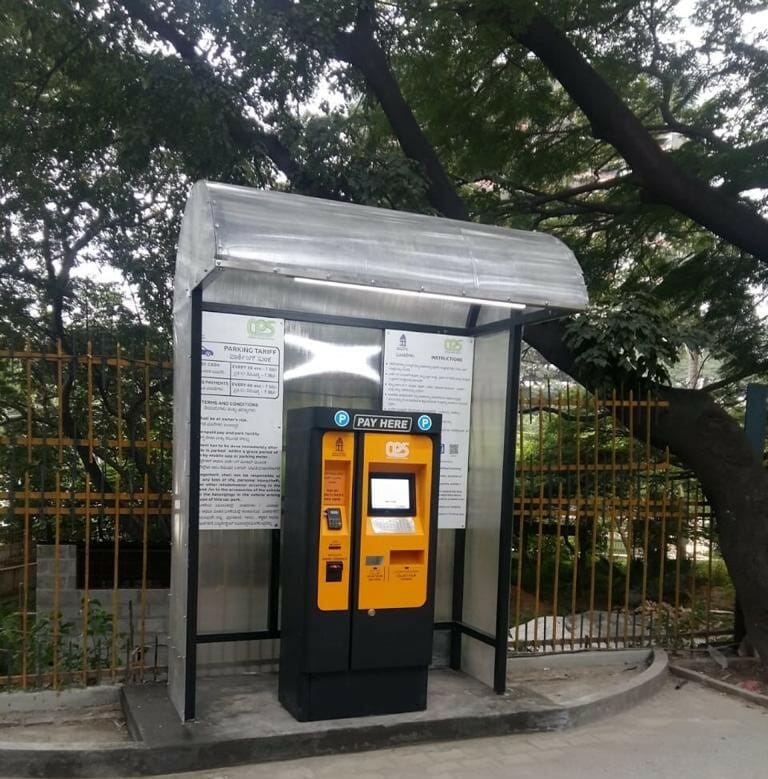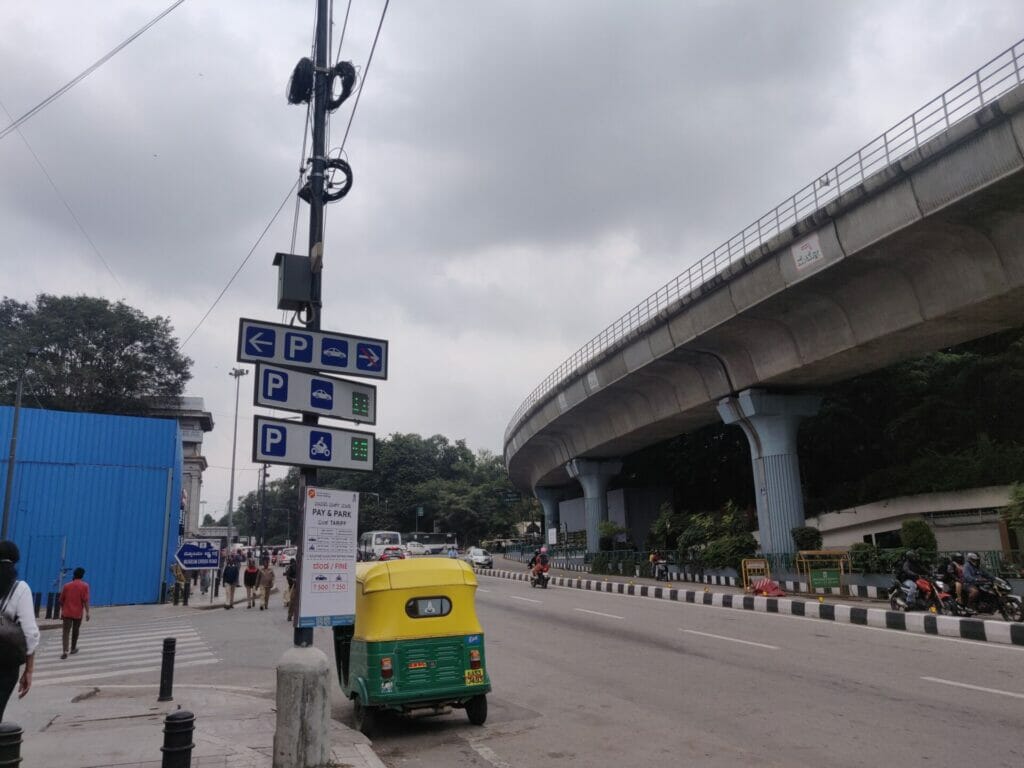“As a car driver, sometimes one is compelled to use the riskier mode of a two-wheeler on potholed roads because of lack of on-street or stilt/ basement parking. It adds 15 to 20 minutes of travel time, risk of towing, and undue pressure on the driver to plan the trip according to possible/potential parking availability, ” says Namrata N, a regular commuter.
This is a problem that every commuter in Bengaluru, who has taken out their private vehicle, has been resonating with for quite a long time now.
Parking ranks high on the list of the city’s road problems. It has been evident that the current parking and road infrastructure are inadequate to shoulder the influx of private vehicles, prompting officials to conjure up solutions out of this mess, with the pay-and-park model being a prominent one.
Leading up to the system
On-street parking has remained at the heart of traffic snarls and crumbling road infrastructure. To address this, in 2019, the BBMP rolled out trials under Smart parking, which was aimed at accommodating 3,300 four-wheelers and 10,000 two-wheelers. It was a move that was lauded by commuters then, who could pay on the spot and not worry about their vehicles being towed or fined.

Since its initial parking policy in 2012, the Directorate of Urban Land Transport (DULT) has maintained that the overarching principle was to “progressively reduce the demand for parking and facilitate organized parking for all types of vehicles.” The current Parking Policy 2.0, which received the state government’s greenlight in February 2021, also makes a case for regulating parking spaces, by flagging the uptick in vehicles and population on the city’s streets coupled with inefficient public transportation.
Read more: Should you have to pay for parking in Bengaluru?
“The policy has happened after three failed parking policies in 2008, 2012, and 2021,” claims Nagesh Aras, who works on urban governance issues. “This new policy aims to create ample parking space across the city, which totally negates the main objective of the Comprehensive Mobility Policy of discouraging the use of private vehicles and nudging people to use public transport,” he adds.
How does the ‘pay-and-park system’ work?
The BBMP is now introducing a pay-and-park model for all eight zones of the city under its jurisdiction. 85 roads in the Central Business District are already under this system, with the municipal body planning on bringing a total of 684 roads. The roads that will serve as paid parking areas have been identified in the south, west, east, and Dasarahalli zone by the Directorate of Urban Land Transport.
Informed by a ground survey report, the BBMP’s current plan is to extend the pay-and-park system in a graded fashion to accommodate 24,387 two-wheelers and 2,834 cars. “This model will be applicable throughout the city, all eight zones of the BBMP. It will come under the umbrella of Smart Parking,” says an assistant executive engineer at the BBMP’s Traffic Engineering Cell, on the condition of anonymity.

“While we have a revenue expectation of Rs120-130 crores per annum (excluding the existing streets) when we floated the tenders, not a lot of agencies voluntarily came forward, we have floated the tender again,” he claims. He says he is unsure of the exact number of revenue generated from the current model.
“One can certainly see the benefit in a pay-and-park model, especially in the context of street parking,” says Radha RH, founder and editor of (our) Parking magazine, and a designer researching public spaces, including parking spaces. She adds this can create a smooth flow of cars during both high and low-demand times of the day. “This will reduce the time people spend cruising for parking, and revenue generated can be put back into providing better public infrastructure.”
Sounding concerns
The policy that will govern the model emphasises on how on-street parking is currently unmanaged, unforced, and free of cost. The civic agency feels the need to bring in a policy and a framework that can cater to the emerging demand of Bengaluru’s micro-mobility modes such as Yulu bikes.
The intention was also to encourage citizens to shift from private modes of transport to public transport by disincentivising free parking. However, Shaheen Shasa, a member of Bengaluru Bus Prayanikara Vedike, doesn’t see the policy deterring private vehicle users, because according to her, the Rs 30 charged for parking on streets classified as ‘A’ (which is assumed to be in the Central Business District) will hardly discourage a middle-class or an upper-middle-class car owner.

“The question really is what is the aim of the parking policy? Does it have a clear vision about the use of private vehicles and how much space we want to allow in the city for private vehicles? Is it looking at parking policy as an instrument to heavily discourage the use of private vehicles? Does it have a position or a view about restricting parking capacity on roads and areas so that people are encouraged to use more public transport and Non-Motorised Transport (NMT)?” asks Shaheen.
Echoing this, Nagesh comments on how none of the objectives of the parking policy is aligned “to create a controlled amount of parking shortage so that people are nudged to use public transport.” “The parking policy, which aims to provide ample parking everywhere, will only inject more private vehicles and reduce the Level of Service of all roads,” he says, while recommending that the currently independent policy should have been subordinate to the Comprehensive Mobility Plan.
Read more: “Bengaluru’s proposed Parking Policy actually encourages private transport”
Offering alternatives
Can the issue of parking be made more participatory to integrate the residents in the decision making and planning processes? Advocating for participatory decision-making processes, Radha remarks that it brings power back into the community and also taps into the social and intellectual capital of neighbourhood networks that would otherwise have been overlooked. “The Namma Parking Festival of Propositions is one such event that invites residents of Bengaluru to come and reclaim parking bays on three streets in Bangalore’s Central Business District,” she says.
According to her, the idea is that this can be a stepping stone to more community engagements, especially at a policy-making or infrastructural development level. “What citizens can do, to begin with, is create awareness about modes of transport alternative to personal vehicles,” she says, urging people to make use of the bus network.
The new parking policy is scheduled to be rolled out based on when the BBMP finds takers for the tenders.